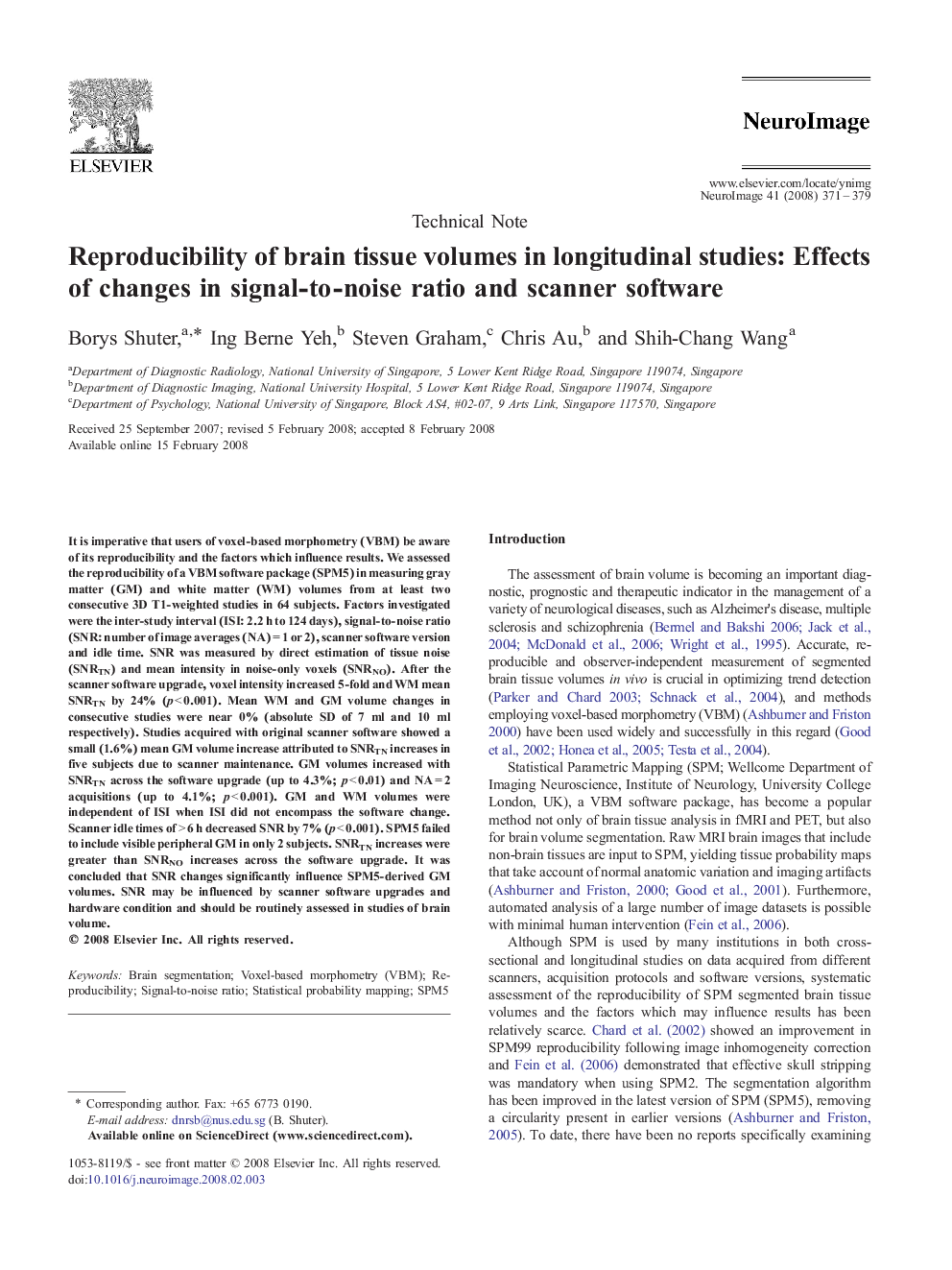| Article ID | Journal | Published Year | Pages | File Type |
|---|---|---|---|---|
| 6039060 | NeuroImage | 2008 | 9 Pages |
Abstract
It is imperative that users of voxel-based morphometry (VBM) be aware of its reproducibility and the factors which influence results. We assessed the reproducibility of a VBM software package (SPM5) in measuring gray matter (GM) and white matter (WM) volumes from at least two consecutive 3D T1-weighted studies in 64 subjects. Factors investigated were the inter-study interval (ISI: 2.2 h to 124 days), signal-to-noise ratio (SNR: number of image averages (NA) = 1 or 2), scanner software version and idle time. SNR was measured by direct estimation of tissue noise (SNRTN) and mean intensity in noise-only voxels (SNRNO). After the scanner software upgrade, voxel intensity increased 5-fold and WM mean SNRTN by 24% (p < 0.001). Mean WM and GM volume changes in consecutive studies were near 0% (absolute SD of 7 ml and 10 ml respectively). Studies acquired with original scanner software showed a small (1.6%) mean GM volume increase attributed to SNRTN increases in five subjects due to scanner maintenance. GM volumes increased with SNRTN across the software upgrade (up to 4.3%; p < 0.01) and NA = 2 acquisitions (up to 4.1%; p < 0.001). GM and WM volumes were independent of ISI when ISI did not encompass the software change. Scanner idle times of > 6 h decreased SNR by 7% (p < 0.001). SPM5 failed to include visible peripheral GM in only 2 subjects. SNRTN increases were greater than SNRNO increases across the software upgrade. It was concluded that SNR changes significantly influence SPM5-derived GM volumes. SNR may be influenced by scanner software upgrades and hardware condition and should be routinely assessed in studies of brain volume.
Related Topics
Life Sciences
Neuroscience
Cognitive Neuroscience
Authors
Borys Shuter, Ing Berne Yeh, Steven Graham, Chris Au, Shih-Chang Wang,
